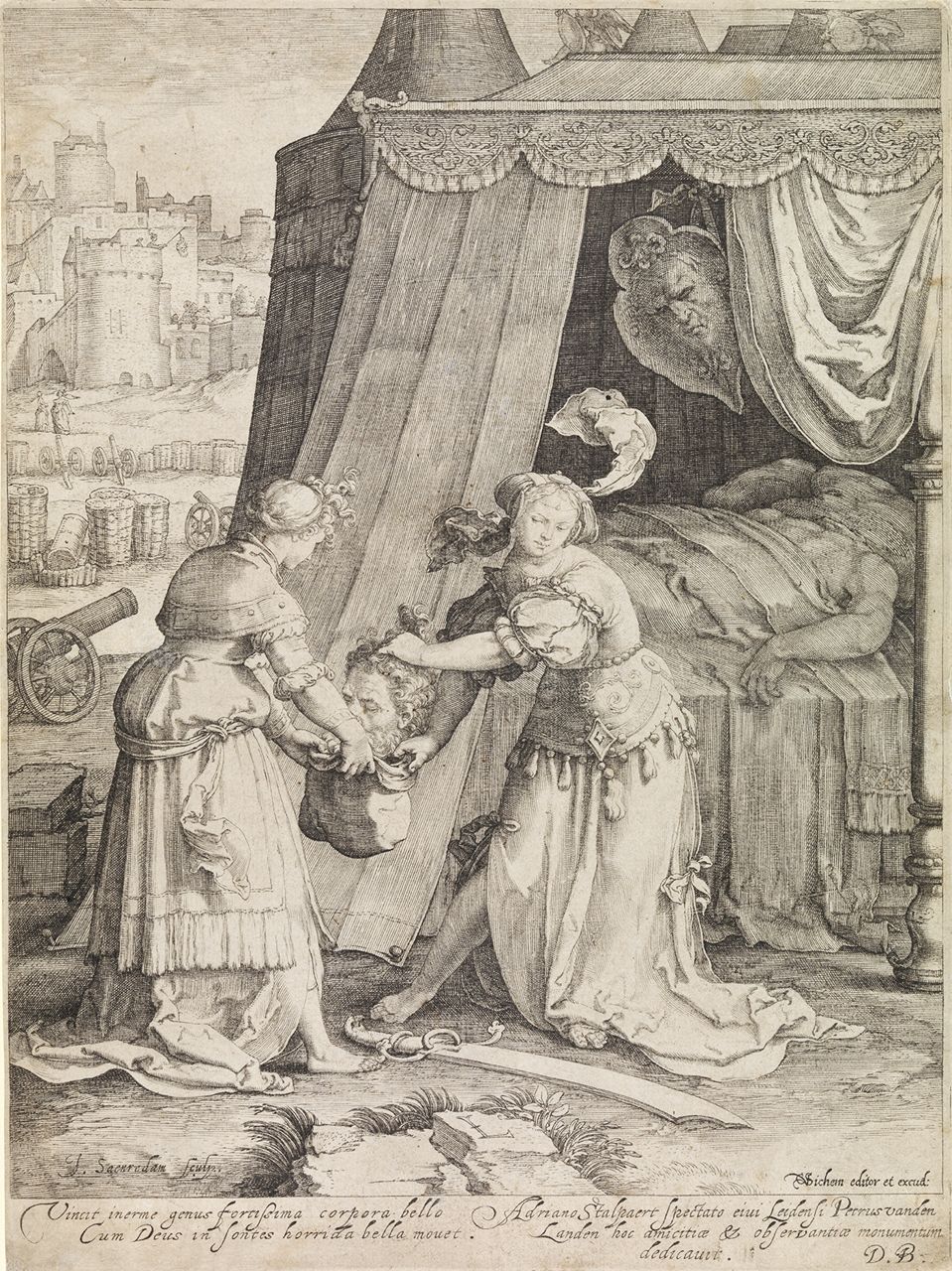Judith with the head of Holofernes, after Jan Saenredam
Download

artist after Jan Saenredam (Dutch, c. 1565–1607)
Judith with the head of Holofernes,
c. mid-17th century
oil on copper
28.5 × 21.0 cm
Purchased 2014
Baillieu Library Print Collection
University of Melbourne
2014.0001

Baillieu Library Print Collection, University of Melbourne
This painting on copper is a coloured version of Jan Saenredam’s engraving Judith with the head of Holofernes (c. 1595). Saenredam’s engraving was itself created after a drawing by Lucas van Leyden (now in the British Museum), the composition of which was reproduced in mirror image. These two instances of recreation of the original make the present object a painting of a print of a drawing.
The scene represents the gruesome story of Judith’s decapitation of Holofernes, an enemy general planning to raid and wreck her hometown of Bethulia. After over-indulging, Holofernes has fallen asleep in his tent in a drunken stupor, allowing Judith and her maid to perform the deed. Judith puts the head into a sack, while her discarded sword lies elegantly across the image. The scenery shown in the distance behind the tent represents their destination – a return to Bethulia.
The subject of Judith was particularly popular during the Renaissance and Baroque periods, both of which are encompassed by this composition, from the c. 1525 Lucas van Leyden drawing to the present oil on copper, most likely created in the middle of the 17th century.
Teaching ideas
The University of Melbourne’s curriculum is rich and varied, and changes from year to year. For more teaching ideas, contact a collection manager.
Art History: Theory and Controversy
Compare the changes between this work in the Baillieu Library Print Collection and the engraving by Jan Saenredam, as well as the original drawing in the British Museum. Discuss the issue of authorship in copies and consider who is the author of this painting – Lucas van Leyden, Saenredam or the unknown 17th-century painter?
Baroque Art in Polycentric Europe
Examine the object in person and consider what stylistic features may help to ascribe its date (bearing in mind that the composition was first sketched around 1525!). Discuss whether the artist has attempted to create a painting that would be contemporaneous to the original drawing, or whether there appears to be a newer, Baroque influence.
Art, Market and Methods
Compare Judith with the head of Holofernes with its precursory engraving by Jan Saenredam (see below). What reasons would artists have for transposing a print to an oil painting? Look at other copies, both in paint and print, and consider the types of buyers such works would have attracted in the 17th-century market.
Exhibition Management
Discuss the different opportunities and difficulties to consider when exhibiting ‘copies’ or ‘works after’. Is it always important to refer or defer to the original?
Sex, Gender and Culture: An Introduction
Consider subversive historical female biblical figures, such as Judith, Jael and Esther, and how they have been represented in art. Compare Judith and Holofernes with other famous 16th- and 17th-century examples.
Drawing, Painting and Sensory Knowing
Explore a range of drawing and painting techniques and media by visiting the Baillieu Library Print Collection and engaging with direct study.
Conservation Research and OBL
Conduct a detailed study of painting on copper in the context of its history, manufacture, value and use of traditional and modern materials.
Intersecting objects
-

Lucas van Leyden (Dutch, 1494–1533)
Susanna and the elders, c. 1508
engraving
19.4 × 14.5 cm (sheet trimmed to image)
Gift of Dr J. Orde Poynton, 1959
Baillieu Library Print Collection
University of Melbourne
1959.3201 -

Jan Saenredam (Dutch, c. 1565–1607)
after Lucas van Leyden (Dutch, 1494–1583)
Judith with the head of Holofernes, c. 1595
engraving
28.3 × 21.0 cm
Purchased 2014
Baillieu Library Print Collection
University of Melbourne
2014.0002
To learn more, visit the website of the Baillieu Library Print Collection.
Further reading
Susan Dackerman et al., Painted prints: The revelation of color in Northern Renaissance and Baroque engravings, etchings, and woodcuts, Philadelphia: Pennsylvania State University Press, 2002.